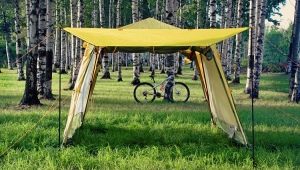Tourist shoes: types, overview of manufacturers and tips for choosing

Recently, many people are trying to lead a healthy lifestyle. This concept includes not only proper nutrition and exercise in the gym, but also active pastime in the air. For example, now in parks you can often meet people doing Nordic walking. Hiking and hiking in the mountains are gaining great popularity.
Varieties of footwear for tourism
Whatever type of hiking you choose, you need not just clothes, but special equipment. It is necessary to pay all attention to the choice of shoes. When going for a long walk, you can not wear any sneakers or boots. You can not only rub calluses or get tired on the road, but also hurt your legs.

Shoes are one of the most important pieces of equipment for outdoor activities. When choosing it, you need to consider several points.
- Any shoes, even for the easiest walk, should be of high quality, durable and well-tailored. It should not stick and tear, otherwise your trip may end earlier than you planned.
- Shoes must be waterproof and water-repellent. Wet shoes often cause colds and illness. In addition, they can rub the skin on the leg and cause discomfort when walking.
- Without fail, shoes should sit tight and at the same time loose, comfortable. It is advisable to spread it a few days before going out and try to walk in it.
And lastly, the main function of shoes is to protect the feet from various injuries and damage, so it must securely fix the foot, have a non-slip sole and a rubberized toe.
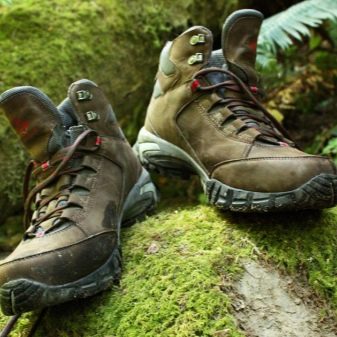

In addition to the above, it must be selected according to the season. And of course, each type of hiking and hiking has its own shoes. They share several types of hiking activities and their own equipment suitable for each of them.
- Hiking. These are small walks outside the city or in large parks. As a rule, they are performed in good weather lasting up to three hours. For shoes, you can wear light trekking sandals or any hiking shoes that are comfortable for you.



- Easy tracking. This is a more difficult version of hiking. This is a hike with ups and downs or over more densely rough terrain. Lightweight trekking boots are suitable for such a walk. They will fix and protect the foot from damage, moreover, these boots have a water-repellent membrane.

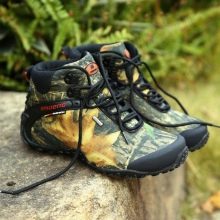

- Tracking. This is the name of trips for several days in areas with different terrain. Walks can be both in warm weather and in the off-season. In this case, trekking boots are suitable. They are usually rubberized over the entire surface. Their sole clings well to the ground even in ice or slush. The upper layer of these boots can be made of natural or artificial leather, cordura or nubuck. The inner layer is with a membrane that prevents water from entering the boot.
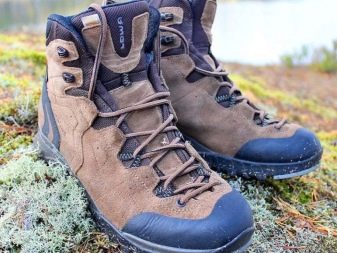



- Heavy tracking. Represents hikes in difficult places, sometimes with ascents away from settlements. For such exits, there are special boots with a thick embossed sole. They have a thicker top layer. They securely fix the legs, they are used for climbing in the mountains.
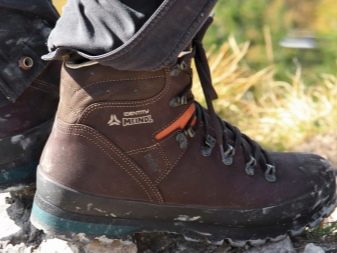
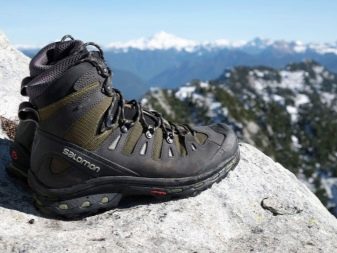


- Mountaineering. These are trips to the mountains in difficult weather conditions, climbing snowy mountain peaks and rock climbing. It is impossible to go on such routes without special training. Special equipment is used, including narrowly targeted shoes for such trips. It is made from the so-called sticky rubber. It hugs the leg tightly and fixes the foot. For climbers, the boots are reinforced with ski bindings and crampons. These boots have several layers of protection against moisture and snow, and have their own lace system.

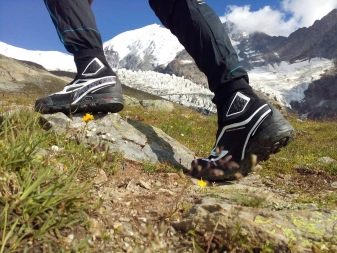

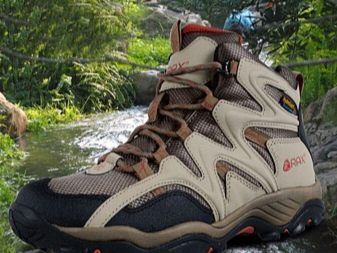
There are other types of hiking shoes for each individual hike.
Trekking boots
Like any item of clothing, trekking shoes are divided into three types: unisex, men's and women's.

Male models are the most common, because in such types of hiking as mountaineering and mountain climbing, men are most often involved. Shoes for such walks are quite heavy in weight - the weight of one pair can reach up to 3 kg. The boots have several layers. The outer layer is made of special plastic, it repels water, prevents the ingress of small stones and dirt and, of course, reliably protects the foot from bruises. The inner layer has additional insulation and allows air to circulate inside.
According to the color scheme, shoes can be brown, black, khaki and dark blue. The size range starts from size 39.


Women's boots are most often found for light trekking or hiking. This is a lighter version of the shoe, the models are made with a high rise and narrowed tops. In the production of women's shoes, manufacturers must take into account the structure of the female leg and foot. Some models are designed with a so-called shock absorber function to reduce the load on the spine. In sports stores you can find sizes from size 36 and up. Women's shoes in brighter colors.


Unisex boots, like women's boots, are made mainly for trekking and hiking. The size range is quite extensive, boots are made in neutral colors: gray, brown, blue and beige.


Waterproof sneakers and boots
Any walking shoes should be waterproof. And it doesn’t matter at all what kind of hiking and what time of the year you are going to get out. Even if you have to hike in the mountains in the summer, the shoes in any case should be waterproof. Wet shoes are not only discomfort when walking, but also the cause of the rapid appearance of calluses on the feet and a cold in a person. The first association with such shoes is, of course, rubber boots.
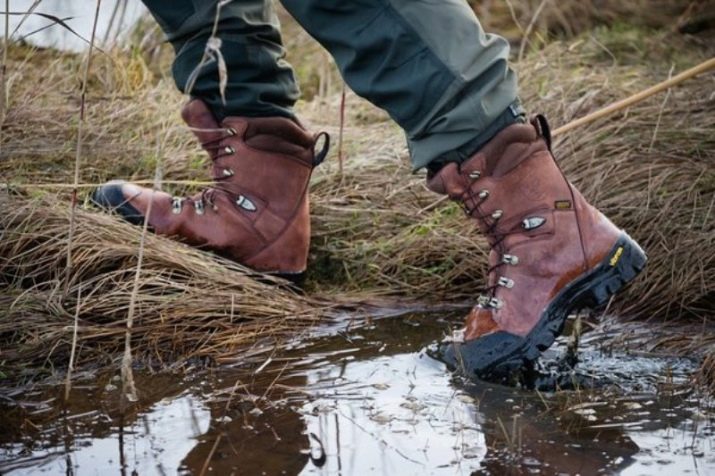
This is a kind of summer version of waterproof shoes for walking, but they have a narrow focus. Well suited for fishing or picking berries in marshy areas.
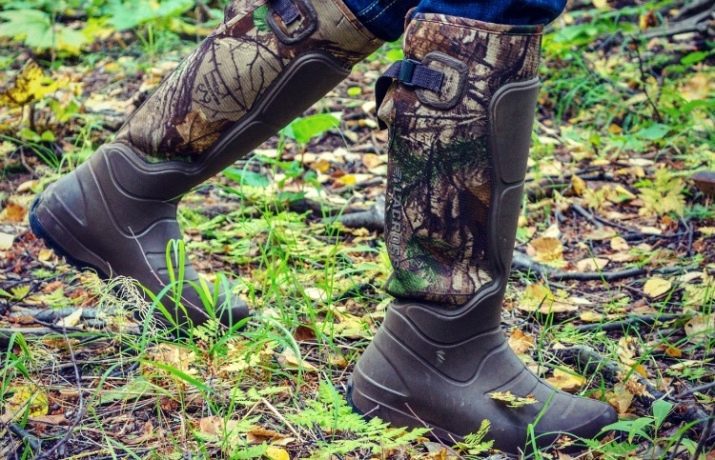
Every other hiking shoe is made from high quality water-repellent materials. At the same time, it retains heat inside the boot.

The first important criterion for waterproof shoes is the sole. It should be oversized and made of high-quality rubber or polyurethane. The pattern on the outsole provides reliable traction even in icy and icy conditions.The sole can be stitched, molded or glued. When sewing such models, they also make an intermediate sole, which allows the boots to be flexible, protects the feet from bumps and scratches.
In such shoes, a membrane is necessarily used - a material that does not allow moisture to penetrate inside the boot, while it passes air well and prevents the feet from freezing in winter.

It is desirable that the shoes were leather or made from other natural materials.. Artificial materials are not always able to withstand weather conditions. And also when choosing shoes made of artificial materials, the feet in them can sweat or, conversely, freeze.


Classic winter options designed for low temperatures down to minus 40 degrees Celsius. A rubberized top layer keeps snow and ice out, while the felt inner sock can be removed for sleeping in a sleeping bag. These boots are suitable even for winter trekking and mountain hiking. Sometimes models can be equipped with additional insoles and have an oversized top.



When choosing waterproof shoes, consider one important point - the seams. Moisture can easily seep through the seams. The fewer seams, the better, there should be closed reinforcements on the heel and toe.
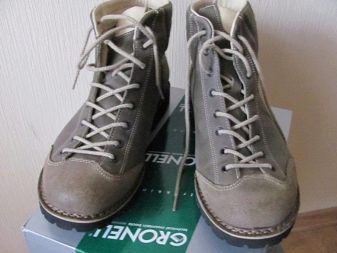
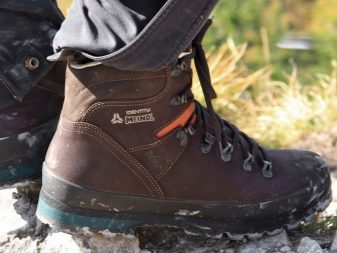
How to choose?
Hiking shoes must be purchased from sports or specialized stores. When buying, give preference to manufacturers who have been working on the market for more than a year and have a positive reputation. When choosing shoes, follow the general recommendations.
- As with any shoe purchase, you should try it on before purchasing professional hiking shoes. But here it is advisable to take 2 pairs of socks with you (one thin) in order to understand how the leg will sit during summer hikes.The second pair of socks is an insulated option for winter outings.
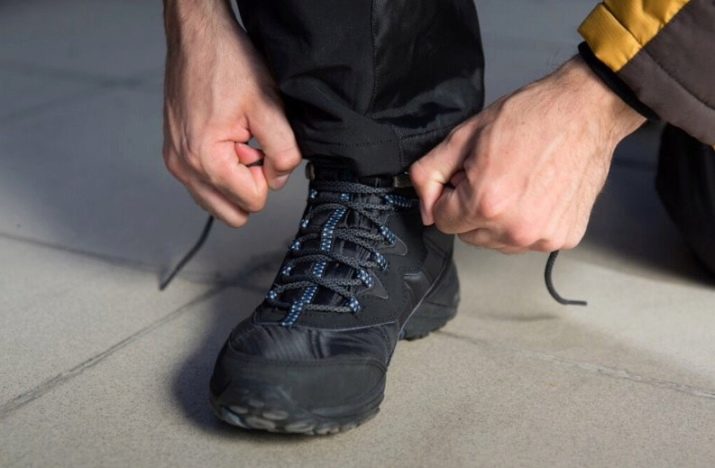
- During the fitting, evaluate well and soberly how the boots sat on you. If they fit snugly around the heel, if there is not much room in front for the toe, be sure to fully lace up the boot. You can try climbing the steps of the store, doing squats, or a few jumps in place. In a word, try shoes in active movement.

- It is advisable to come in the evening to buy shoes. At this time, the foot is slightly expanded and more consistent with the position during an active hike. It is better to take shoes a maximum of one size larger.

Top Models
Each type of footwear has its own functionality and preferred conditions of use. There are also some recommendations for selection.
- Whether you're going for a hike in the countryside or a one-day cross-country trail, lightweight trekking shoes are a good option for this hike. Despite their low weight, they provide reliable traction and good fixation of the foot. Models such as the Garmont Dragontail and Salomon Speedcross excel in this area.


- For more difficult hikes, such as mountain climbing, hiking through dense forests or multi-day expeditions, it is necessary to take more durable shoes. Models of trekking boots The North Face Hedgehog Hike, Scarpa Zodiac, Salomon X Ultra are used, as a rule, in such routes.



- Separately for rock climbing, special rock shoes are used. Unlike the models listed above, it has a lowered shaft and a more densely rubberized sole with a clear tread pattern. Popular models in this segment are Scarpa Mojito, Asolo Alpine Salyan.
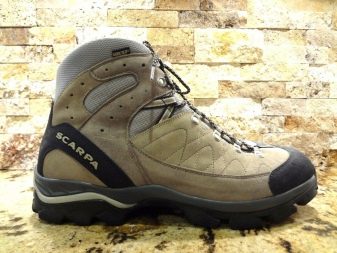

Any footwear for tourism does not just have to withstand mud, snow and other weather conditions.It should keep a person's feet warm and protected from external factors. At the same time, shoes should be comfortable and durable.

For information on how to choose the right hiking shoes, see the following video.






















